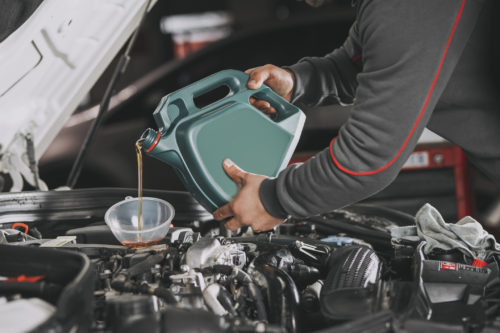Not Driving Much? Here’s Why You Should Keep Your Car’s Engine Oil In Check
The new normal of working from home and citywide lockdowns mean we drive our cars less frequently, leading to them sitting in their parking spots for days or weeks on end. A car needs to run in order to stay in good condition. If that’s not possible, you must take some steps to keep it healthy. And one of the greatest determinants of a car’s health is the quality and integrity of its engine oil.
What does engine oil do?
Oil is necessary to lubricate the engine. It reduces wear and tear, minimises friction, prevents corrosion, maintains an ideal operating temperature – and, as a result, increases the engine’s efficiency and lifespan. Over time and use, engine oil degrades due to breakdown of the compounds in it. As such, vehicle manufacturers recommend an interval for the changing of engine oil. This interval is calculated in terms of distance and time.
Under normal running conditions, the distance interval is what people keep an eye on – the more your car runs, the more its engine oil is likely to degrade. The time interval, however, is equally important: engine oil degrades naturally if left to sit, requiring it to be changed after the recommended number of months even if the vehicle hasn’t racked up enough kilometres to satisfy the distance interval.
How often should you change the engine oil?

The golden rule is to follow the manufacturer’s recommended time and/or distance intervals. Modern engines are made to exacting technical specifications, and the manufacturer can specify their care schedules better than anyone else. While most manufacturers recommend changing engine oil at least once every six months or 5,000 kilometers, Ford vehicles have generous recommended service intervals of 1 year or 10,000 kilometres, whichever comes first. The FordPass app provides notifications that indicate upcoming recommended oil changes, lists service availability and new engine oil costs. It can alert the owner about problems with the oil system, such as low engine oil pressure.
Following the manufacturer’s recommended interval for oil change is the best practice, but you should supplement this with periodic oil level checks. Checking the oil level is easy – all you need to do is remove the dipstick, wipe it clean, dip it back until it is fully inserted, and remove it again. The level of oil will be indicated on its surface. If the level is below the indicated minimum amount, you should top up the oil. Checking the oil level is also a good time to check oil health. Good oil should be between golden amber and dark brown in colour. If the oil is too light or milky in colour, its integrity has been compromised, and you should change it at the soonest.
What happens if engine oil is not changed regularly?
Running your engine on less-than-adequate oil can damage it, often substantially. Poor or inadequate engine oil can cause an engine to run too hot, heat-damaging its components. This increases friction among its moving parts, leading to abrasion damage. Bad engine oil can also allow moisture into the engine and facilitate corrosion or lead to the build-up of gunk that can choke the oil circulation system. All of these can reduce the efficiency of an engine and even lead to complete engine failure over time.
What type of engine oil should you use?
There are various types of engine oils available, some more expensive than others, all with varying properties. Synthetic engine oils are supposed to have longer lifespans and better integrity than non-synthetic oils, though they come at a higher cost. Again, the rule of the thumb is to follow your manufacturer’s recommendations. Ford owners can use the FordPass app to check the type and brand of engine oil recommended for their cars.

To keep your car in great running condition, timely oil changes are necessary, irrespective of how often or how much you drive. With services like a Dial-A-Ford and the FordPass app, you can get your engine oil changed without leaving the comfort of your home. Simply get in touch and schedule a service; a Ford representative will pick up your car, change the oil, and deliver it back to your doorstep.
Subscribe to our newsletter
Subscribe to our newsletter to stay upto date with latest news, offers and much more




